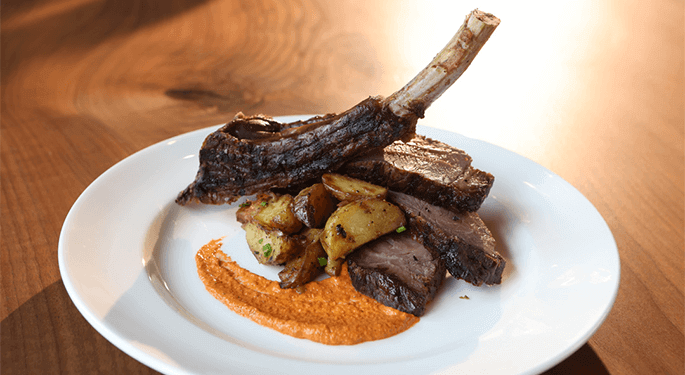Have you ever tried dry-aged beef? If you have, you know just what flavor explosion is waiting in that first bite. If you haven’t, then you should know that you’re missing out on what some would consider the eighth wonder of the world.
So, what is dry-aging, and what makes dry-aged beef so good? Keep reading to find out.
Dry-Aging: A History
Humans have dry-aged their beef for centuries to preserve and tenderize their meat. Of course, our ancestors didn’t have the technology we have today, so their methods were a bit more rudimentary and flawed.
However, as most butchers and chefs know it, the practice was commonplace until the 1980s, when wet aging grew in popularity. Wet-aging refers to the process in which a cut of beef, like a filet mignon, is vacuum-sealed. The meat is held for weeks, sometimes months.
Being vacuumed-sealed means that no evaporation can take place. So, unlike in dry-aging, where the evaporation concentrates the beefy flavor, you experience a milder taste, and a less tender mouth feel in wet-aging.
Ultimately, you can’t fake dry-aged meat. The amount of time, science, and artistry it takes to make dry-aged beef makes it a unique product.
What Is Dry-Aging?
You expose the subprimal to oxygen, which activates natural enzymes within the meat. These are aerobic bacteria, meaning they need oxygen to survive. When they get to work, they break down the molecular bonds of the meat.
This process ultimately affects the flavor and texture of the meat. Like the mold on blue cheese, good mold also makes its way onto the meat. This will also enhance the flavor profile differently, depending on your geographic location.
Dry-Aging in Detail
As mentioned, part of what makes dry-aged beef so unique is the chemical changes that occur during the dry-aging process. Proteins and molecules like glycogen, DNA, and RNA make up the muscle cells.
In general, these molecules are large and flavorless. However, they are broken down into smaller, more flavorful fragments during the dry-aging process. Proteins become amino acids, while DNA/RNA material becomes molecules that are savory and enhance the umami flavor of MSG. In contrast, glycogen becomes sugars which add sweetness to the funkiness of the beef.
How To Dry-Age
First, you must consider temperature. The beef is hung in a refrigerated room where the temperatures are maintained between 32- and 39-degrees Fahrenheit.
Then, there’s humidity. Humidity is controlled to preserve freshness. The optimal humidity setting varies from 50% to 85%. While it’s mostly a matter of preference, most people set their humidity somewhere around 60%.
Finally, we have airflow. The recommended airflow is 1.6-6.6 ft/s to ensure optimal weight and trim loss during the aging process. This entire process exists to enhance the natural aging process of the beef.
Try Dry-Aged Beef at Cleaver & Cocktail
Chefs Marc and Brian are dry-age masters. They even infuse their beef with flavors like lavender and French oak. All their beef is dry-aged in-house. They carefully watch over the process to ensure our customers receive the best of the best.
For more information about Cleaver & Cocktail or to make reservations visit our website today!

